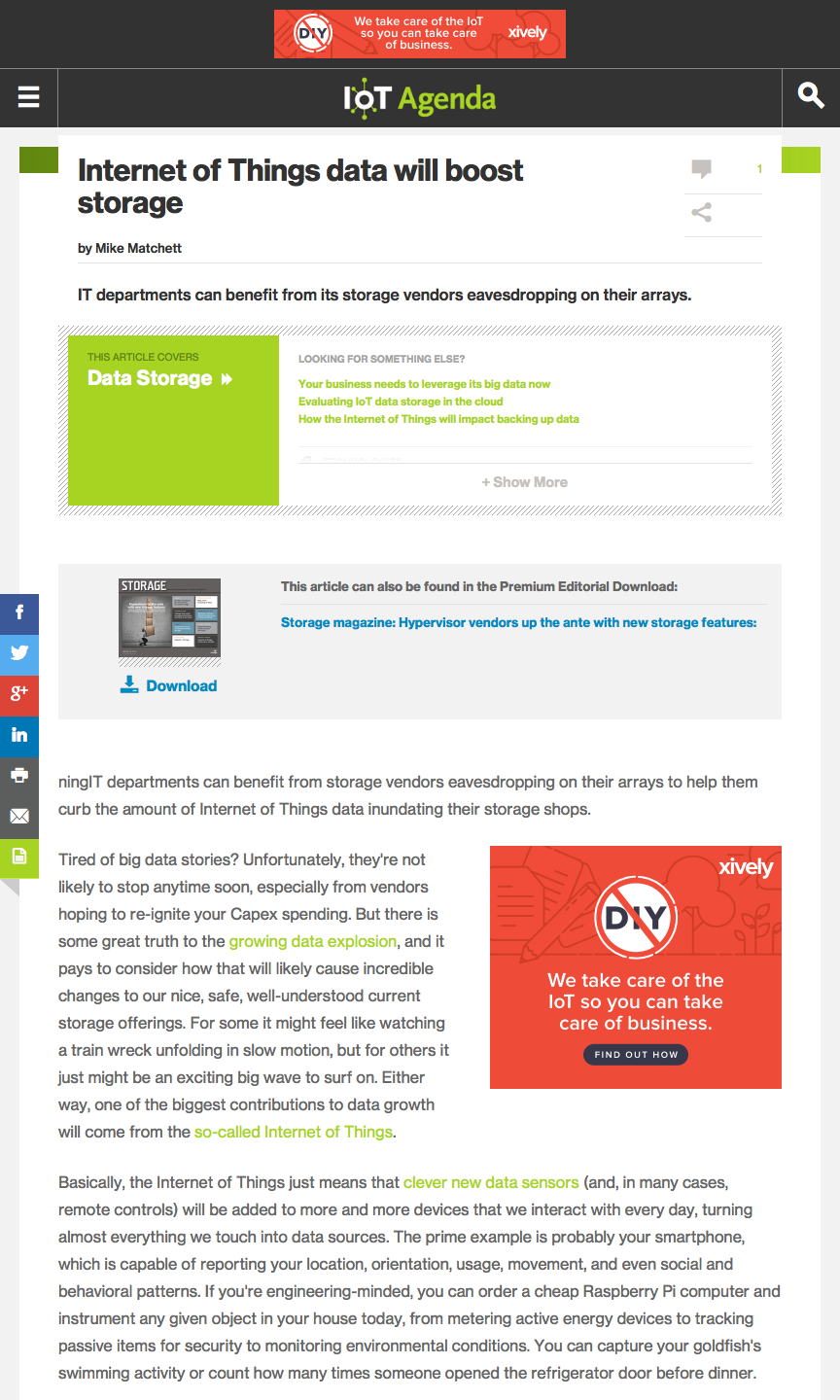The Internet of Things and Beyond: 5 Things We’ll Be Tracking for a Better Tomorrow

An IT industry analyst article published by Virtualization Review.
What the Internet of Things offers is this huge opportunity to build intelligent applications that can actively optimize and direct just about any system that is dynamically programmable. Here are the five types of things that are soon likely to be “sensorized” in your IT shop.
 With the incredible rise in the number of mobile devices we can also see the advent of the Internet Of Things. Every device, mobile or otherwise, that has some ability to generate an interesting stream of data is getting “sensorized” and connected. The resulting streams of big data provide a wild new frontier for intelligence mining. We at Taneja Group see this trend opening up huge opportunities to build intelligent applications that can actively optimize and direct just about any system that is dynamically programmable.
With the incredible rise in the number of mobile devices we can also see the advent of the Internet Of Things. Every device, mobile or otherwise, that has some ability to generate an interesting stream of data is getting “sensorized” and connected. The resulting streams of big data provide a wild new frontier for intelligence mining. We at Taneja Group see this trend opening up huge opportunities to build intelligent applications that can actively optimize and direct just about any system that is dynamically programmable.
Creating intelligent feedback and control loops has always been an engineering goal, whether it’s controlling home automation, a fleet of airplane engines, or your next IT “software-defined” data center. It all starts with getting all the devices that have a story to tell to stream back their location, connectivity, performance, capacity, health, usage, errors, and configurations dynamically. Now, some food for thought: Here are the five types of things that are soon likely to be “sensorized” in your IT shop.
- TAKE 1 – User computing devices
Laptops, tablets, and smart phones already generate large streams of interesting data, but printers, monitors, desktops, spare batteries, and even peripherals (e.g. do know where all your USB sticks are right now?) could get detailed sensors. Maybe even the break room coffee machine. - TAKE 2 – Each infrastructure box or “appliance”
We get reams of data from the logical “application” side of systems today, but knowing where the physical boxes are racked or stacked, how each is experiencing temperature, getting jostled or vibrated, and using power will all get correlated with how each is delivering on its performance, capacity, and resiliency service requirements. - TAKE 3 – Cards, modules, and components
…
…(read the complete as-published article there)
